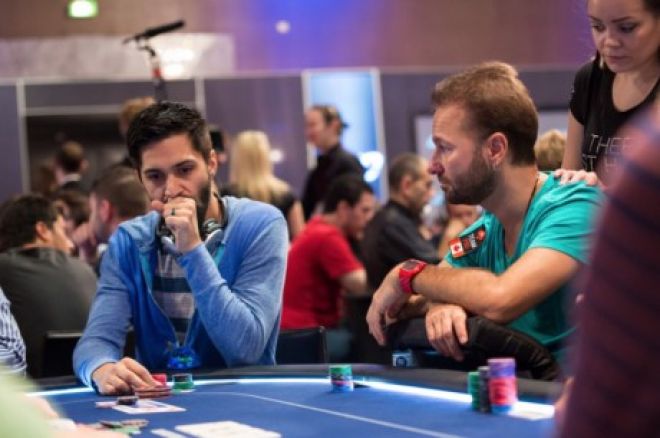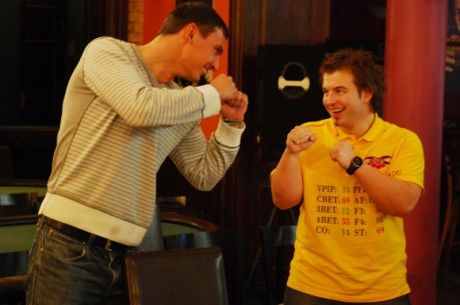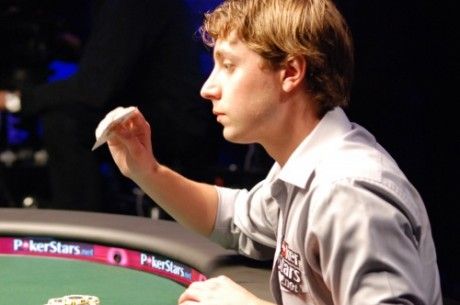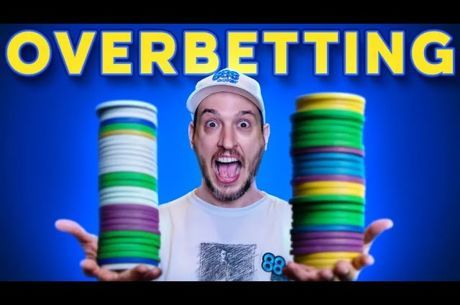Thinking Poker: Fighting Back, Part 2 (Talking and Trapping)

Nate Meyvis concludes his two-part series of articles offering advice to new players looking for ways to counter moves made by more experienced players who are targeting them.
In my last article I discussed how poker players view beginners as targets, and how beginning players should therefore prepare to be treated as such. One aspect of that preparation is to understand counter-strategies for the tactics people use specifically against beginning players.
Last time I talked about how to respond against a player using aggression against you. Today I want to address a couple of other commonly used tactics to unnerve new players — talking and trapping.
Talking
What it is: Experienced players will try to get extra information out of you by talking to you and seeing how you react. Often these are questions that sound innocuous and routine (so that you answer them without stopping to consider whether you ought to) or ones that surprise you (in the hope that you can’t help but react to them somehow).
Why it works: Many people who do this are very good at judging answers to the questions they ask. Some are simply psychologically astute or unusually perceptive. Some have asked the same questions hundreds of times and observed patterns among the respondents. Many are familiar with patterns of thought that generate categories of responses — for example, that people like to say things that are technically true but misleading, so that “I don’t have two pair” might indicate that someone has trips.
A first response: Happily, this is a game you can simply opt out of. There is nothing rude about staying quiet as you play your hand — or after it.
The best response: Even better is to beat them at their own game, but be careful! In poker as in all kinds of gambling, you need a very good reason to opt in to a game where your opponent has set the terms. One possible counter-strategy is to invert a “weak means strong” tell when you want to project strength. Sighing and saying that you suppose you have to call might cause your opponent to think your hand is better than it is. When I’m in doubt about how I will be perceived, however, I still usually decide to stay quiet.
Trapping
What it is: I don’t mean “trapping” to mean “slow playing” — rather, I mean the strategy of entering lots of pots with speculative hands, banking on one’s ability to get full value when those speculative hands hit the board hard.
Why it works: Beginners often conflate different kinds of looseness. Just because someone is entering the pot loosely doesn’t mean she’s putting in two hundred big blinds without a hand. It’s also easy to think that loose tendencies correlate with aggressive ones and therefore to attribute strong betting to playing style rather than to the strength of the hand. Finally, it can be tough to fold good hands even when your opponent is representing something better.
A first response: Your overall goal should be to reap the benefits of taking better hands to the flop without giving too much back on the later streets. You can’t play too weakly against big bets, because this will open you up to getting bluffed out of pot after pot, but you can make sure you aren’t calling with too much of your range on the turn and river. You can also make a habit of making sure you aren’t confusing absolute and relative hand values: even if you have two pair, you need to fold if too much of your opponent’s range is straights and flushes.
A good guideline against this sort of player is to be hyper-sensitive to bet-sizing. Because trapping players’ strategy depends on getting full value for their best hands, they often make large bets with those hands, and they don’t always make the same bets with their weaker hands. If the pot is $200, a bet of $185 will often more often indicate a monster than a bet of $130, which is more likely to be a thinner value bet or a bluff.
The best response: If your poker fundamentals are strong, there are many ways to exploit opponents who are getting to the flop with ranges that are too wide. Here are two:
First, if you are skilled in medium and large pots, you can bet and raise the flop aggressively, because your range will often be much stronger than theirs.
Second, if you have a good idea of which hands your opponent is speculating with, you will find yourself in situations when he often has exactly one pair.
If, on the turn, the board is 10x4x2x8x and if your opponent has called the flop and bet the turn, there are many opponents who will have many eights and weak tens in this spot. That’s not just because of their turn-betting habits, but because some people love to take medium connected and semi-connected cards (including 10x9x, Jx8x, and so on) to the flop against beginning players. Therefore, this can be a good spot to bluff-raise if you don’t have a pair. Be careful, though — this sort of play relies both on your knowledge of your opponent’s preflop range and of his postflop tendencies.
Be sure to check out Nate and Andrew Brokos on the Thinking Poker podcast, and for more from Nate visit his blog at natemeyvis.com.
Get all the latest PokerNews updates on your social media outlets. Follow us on Twitter and find us on both Facebook and Google+!








